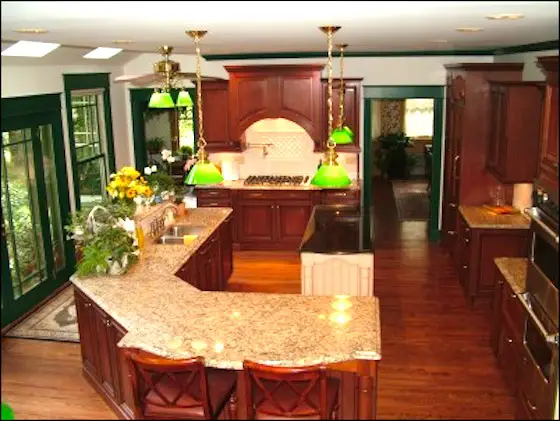Cabins are obviously a popular topic. This Builder Bulletin is in high demand! If you are fortunate and have a piece of land in the woods or on the coast where you can build one, then I truly envy you. I can't think of a more peaceful way to spend a weekend or a summer than in a remote cabin with a spectacular view of woods, a lake or a meadow. Close your eyes and dream about resting on the covered porch reading a book while you lay in a hammock. Oh yeah baby!
You Need to Think
If you have the opportunity to talk with a current cabin owner or can stay in one for a week before you build one, it is a wise investment of time. The biggest mistake you can make is building a cabin that is too small. What looks good on paper may end up feeling like an oversized refrigerator box when complete. Consider renting a small cabin at a local state park for a weekend. See what it feels like. Experience wasted space or see where you feel you need more space. There is no substitute for the real thing. If you want the perfect cabin, you better test drive a few existing ones first!
Storage Problems
When you start to review plans, you will not see many places in the smaller cabins to store things. Closets are a luxury item in most cabins. Be sure you figure out what you are going to do with your clothes and any gear you intend to bring with you to the cabin.
The key is to try to be as primitive as possible. More things mean more storage space. You will need bare essentials, but consider planning your cabin as if you were just going backpacking. If you want a more luxurious cabin with more amenities, then you will need to make it bigger.
A big problem for many cabin occupants is bad weather. Sure, the cabin can keep you warm and dry, but what happens if you come back to the cabin all cold and wet from a day's activities? Where are you going to dry all of your wet clothes and those of any other occupants? You better figure out where to hang these items. If you don't you will have a real mess on your hands and you will be dodging clothes hanging from everywhere.
Heating Problems
My dream cabin is going to be well insulated. This will stop cold drafts in the winter. Great construction techniques can ensure that a medium sized stove can run you out of the cabin with excess heat! Make sure you purchase a stove that has a great damper control that allows you to regulate the rate of burn. You don't want too much heat. It can get very uncomfortable.
Be sure you follow all fire safety construction codes. I would also install a smoke detector to alert you if a fire starts during the middle of the night.
Security Issues
Cabins are often located out in the middle of nowhere. Uninvited guests may really want to get in to see what you have inside. If the cabin is in the middle of the forest, I would think twice about a standard door lock. Let visitors have access and hope that you experience no vandalism. If vandals do stop by, you know they are going to break the door down, so why not just let them in? You can equip the door with a slide bolt so that you have security when you stay in the cabin.
Light
Let Mother Nature do your lighting. You will not have electricity unless your cabin is located near utility lines. Large windows and skylights will let in massive amounts of daytime light. They will also create an ambiance on those crystal clear nights with a full moon!
